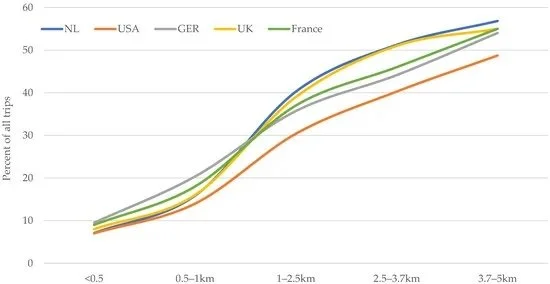Pedestrian Safety //
Unsafe, incomplete, and inconvenient walking facilities are a major deterrent to walking. In contrast, safe and connected networks of pedestrian facilities promote walking by separating and protecting pedestrians from motorized traffic. In pedestrian-friendly cities, these networks comprise sidewalks on both sides of the street; highly visible, clearly marked, often raised, and well-lit crosswalks; median islands in roadways that allow pedestrian to cross in two stages; leading pedestrian green phases at signalized intersections with sufficient crossing times for all pedestrians; as well as turn restrictions for motor vehicles at especially dangerous intersections.
What differences in government policies might help explain the variation among countries in levels of walking? What differences in government policies might help explain why walking is so much more dangerous in the USA than in Western Europe and Canada? Based on their successful implementation in some places, which government policies have proven to be effective at raising walking levels while also improving pedestrian safety?
In contrast, roadway design standards in European countries have considered walking and pedestrian safety for many decades. Compared with the USA, that has resulted in narrower roadways; overall lower speed limits; slower turn speeds as well as turn restrictions; and lower traffic volumes. Thus, most roadways and intersections in Western European countries are specifically designed to ensure safe, convenient, and low-stress walking.
The severity of motor vehicle crashes increases with vehicle speed. At lower speeds crashes are less severe or can be avoided altogether because drivers have more time to react. International research and best practice emphasize the need to keep speeds slower than 30 km/h. Between 2010 and 2015, most (56% pedestrian fatalities in the United States were on roadways with speed limits greater than 35 mph (56 km/h) Many urban and suburban arterials in the U.S. have speed limits of 45-55 mph (75-88 km/h) which pose a great danger for pedestrians (and motorists). In contrast, speed limits in Western European cities are typically below 50 km/h. Speed limits are not only higher in the United States, but a study by the OECD found that almost 75% of U.S. drivers admitted to regularly exceeding the posted speed limit, compared with lower shares in Britain (22%) and the Netherlands (45%)




